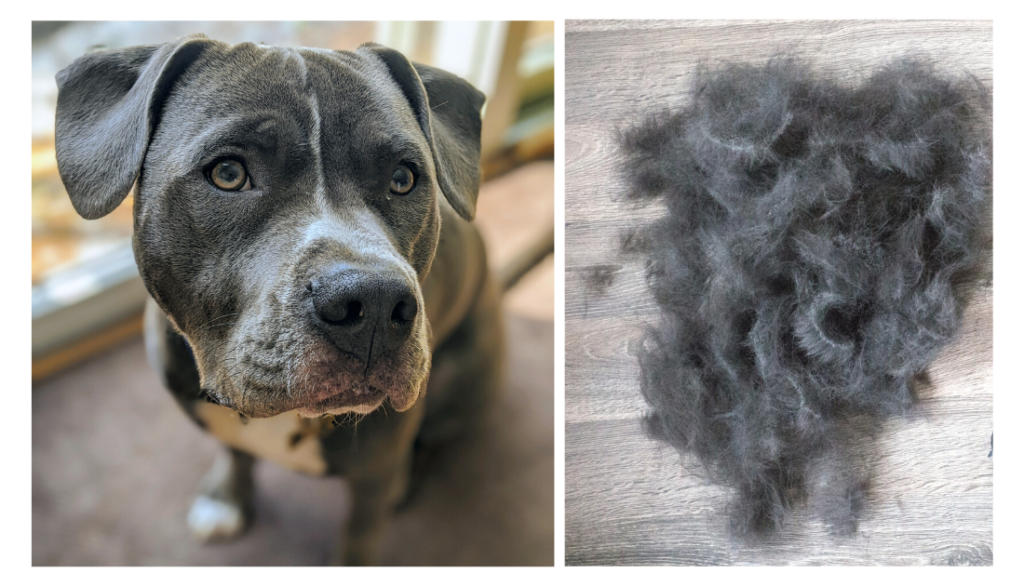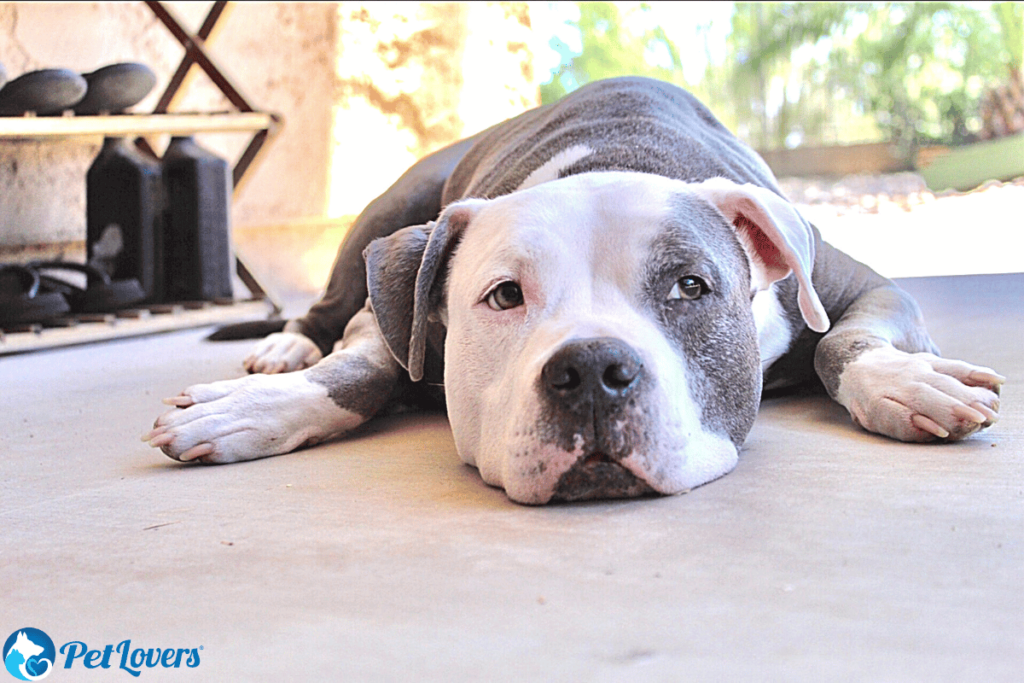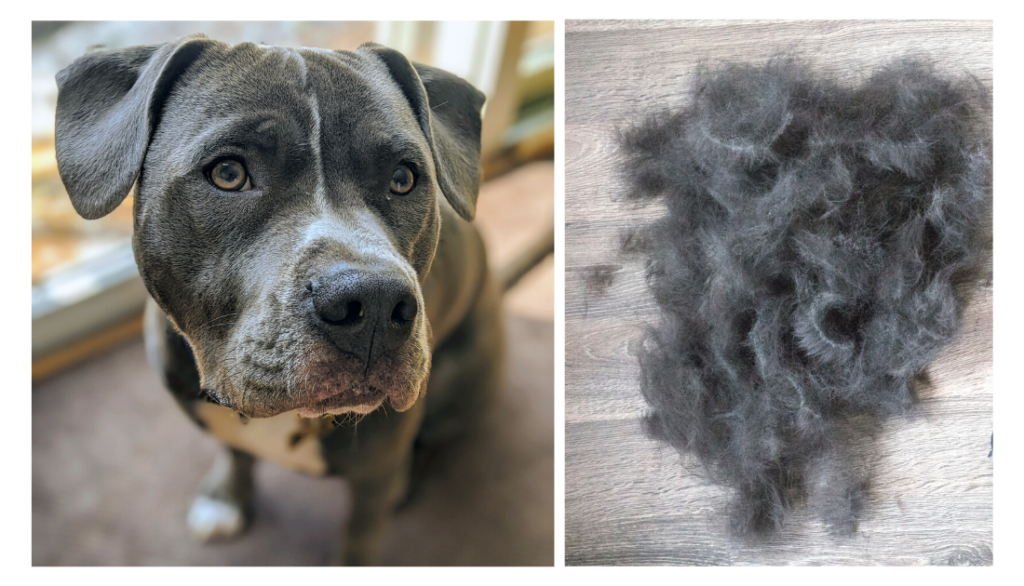When it comes to shedding, pitbulls are often misunderstood. Did you know that pitbulls actually have a reputation for being heavy shedders? Despite their short coats, these dogs have a tendency to leave a trail of fur in their wake. This surprising fact may come as a surprise to those who assume that pitbulls have minimal shedding compared to other breeds.
Pitbulls are known for their short, smooth coats that require minimal grooming. However, their shedding can still pose a challenge for owners. While pitbulls do not have an excessively thick undercoat like some breeds, they still shed a moderate amount of fur throughout the year. Regular brushing can help minimize shedding by removing loose hairs and distributing natural oils, improving the overall health and appearance of their coat. So, while pitbulls may not be the heaviest shedders out there, it’s important for potential owners to be aware of this aspect and be prepared to handle regular grooming to keep their dog’s shedding under control.
Pitbulls are known to shed moderately. While shedding varies depending on the individual dog, pitbulls generally have short, dense coats that shed regularly throughout the year. Regular grooming, such as brushing and bathing, can help manage shedding. Additionally, a balanced diet rich in omega-3 fatty acids can promote a healthier coat and reduce shedding. Providing proper care and maintenance for your pitbull’s coat will help minimize shedding and keep them looking their best.

Does a Pitbull Shed?
Pitbulls are popular and beloved breeds, known for their loyalty and affectionate nature. However, if you’re considering welcoming a Pitbull into your home, you may be wondering about their shedding tendencies. In this article, we will explore the shedding habits of Pitbulls and provide you with valuable information to help you make an informed decision.
Understanding Pitbull Coat Types and Shedding
Pitbulls come in various coat types, including smooth, short, and medium-length. While their coats may differ in texture and length, all Pitbulls have a single layer coat. This means that they lack an undercoat, which typically leads to less shedding than double-coated breeds.
Despite having a single layer coat, Pitbulls do shed to some extent. Shedding is a natural process for all dogs, as it helps them get rid of old or damaged fur. Pitbull shedding is considered moderate, and it typically occurs year-round. However, there are certain factors that can influence the amount of shedding, such as seasonal changes, hormonal fluctuations, stress, and overall health.
To minimize shedding and keep your Pitbull’s coat healthy, regular grooming is crucial. Brushing your Pitbull’s coat at least once a week helps remove loose fur and reduces the chances of it ending up on your furniture or clothes. Additionally, a balanced diet rich in essential nutrients contributes to a healthy coat and reduces excessive shedding.
Managing Pitbull Shedding
While Pitbull shedding is not excessive like some other breeds, there are still measures you can take to manage it effectively. Here are some tips to keep in mind:
- Regular Brushing: As mentioned earlier, regular brushing helps remove loose fur and prevents it from accumulating around your home. Use a brush or a grooming tool specifically designed for short-haired breeds to effectively collect loose hairs.
- Bathe Your Pitbull: Regular baths help keep your Pitbull’s coat clean and healthy, reducing the chances of excessive shedding. Use a mild dog shampoo that suits your Pitbull’s skin type and avoid over-bathing, as it can strip away natural oils and lead to skin dryness.
- Proper Nutrition: A well-balanced diet that meets your Pitbull’s nutritional needs is vital for overall health, including the condition of their coat. Consult with a veterinarian to determine the best diet for your Pitbull, taking into account their age, activity level, and any specific dietary requirements.
The Benefits of Owning a Pitbull
While shedding might be a consideration for potential Pitbull owners, it’s important to remember the many positive aspects of this breed. Pitbulls are known for their loyalty, affectionate nature, and love for their families. They are often great with children and can be excellent companions when properly socialized and trained. Pitbulls are also highly trainable and excel in activities such as obedience training, agility, and even therapy work. Their high energy levels make them perfect for individuals or families with an active lifestyle.
Myths about Pitbull Shedding
There are several myths surrounding Pitbull shedding that need to be addressed. One common misconception is that Pitbulls are hypoallergenic. While they may cause fewer allergies in some individuals due to their lack of an undercoat, Pitbulls can still produce allergens in their saliva and dander, so it’s essential to spend time with the breed before assuming it won’t cause any allergic reactions.
Another myth is that Pitbulls shed less than other breeds. While Pitbulls do shed less than double-coated breeds, they still shed to some extent. This shedding can be managed effectively through regular grooming and proper care.
Conclusion
In conclusion, Pitbulls do shed, but they are not considered excessive shedders like some other breeds. With regular brushing, proper nutrition, and regular grooming, you can effectively manage their shedding and keep their coat healthy. Remember, the shedding habits of a Pitbull should not overshadow the many wonderful qualities and benefits of this breed. Consider your lifestyle, preferences, and ability to provide the necessary care and attention a Pitbull requires before making your decision.
Pitbull Shedding: Debunking Common Myths
Myth 1: Pitbulls are hypoallergenic
Myth 2: Pitbulls shed less than other breeds
Myth 3: Pitbulls don’t require regular grooming
What Factors Affect Pitbull Shedding?
Seasonal changes
Hormonal fluctuations
Stress
How to Manage Pitbull Shedding
Regular brushing
Proper nutrition
Bathing your Pitbull
Key Takeaways: Does a Pitbull Shed?
- Pitbulls are moderate shedders and require regular grooming to control loose hair.
- Regular brushing helps control shedding and keeps the coat healthy and shiny.
- Pitbulls shed more during the shedding season, which occurs twice a year.
- Proper nutrition and hydration can minimize excessive shedding in pitbulls.
- Pitbulls with short coats shed less compared to those with longer coats.
Frequently Asked Questions
In this section, we have gathered some common questions related to pitbull shedding. Find out if pitbulls shed and how to manage their shedding.
Why do pitbulls shed so much?
Pitbulls have a short, dense coat that constantly sheds. Shedding is a natural and necessary process for dogs, as it helps them get rid of dead and damaged hair. However, pitbulls shed more than some other breeds due to their shorter hair length and higher hair density. Additionally, factors like genetics, climate, and overall health can influence the amount of shedding a pitbull experiences.
To reduce shedding, regular grooming is essential. Brushing your pitbull’s coat at least once a week will help remove loose hair and prevent excessive shedding. A healthy diet rich in omega-3 fatty acids can also support a healthier coat and minimize shedding.
Can I prevent my pitbull from shedding?
Although you can’t completely prevent a pitbull from shedding, you can take steps to manage it. Regular grooming is key to keep shedding under control. Brushing your pitbull’s coat not only reduces shedding but also keeps their skin and coat healthy. Use a grooming tool specifically designed for short-haired breeds.
In addition to grooming, providing your pitbull with a healthy diet is crucial. Feeding them a balanced diet that includes omega-3 fatty acids can improve the condition of their skin and coat, leading to reduced shedding. Consult with your veterinarian to ensure you are meeting your pitbull’s nutritional needs.
Do all pitbull breeds shed the same amount?
No, not all pitbull breeds shed the same amount. While all pitbulls have a short, dense coat that sheds, the amount can vary between individuals and breeds. Factors such as genetics, overall health, and coat condition can influence the shedding patterns of different pitbull breeds.
For example, American Pit Bull Terriers tend to shed moderately year-round, while American Staffordshire Terriers may shed more during seasonal changes. It’s important to understand your specific pitbull breed’s shedding tendencies and take appropriate grooming measures to manage it effectively.
When do pitbulls shed the most?
Pitbulls generally shed year-round, but there are certain periods when they may shed more. Seasonal changes, specifically during the spring and fall, can trigger increased shedding in pitbulls. This shedding is often more noticeable as they shed their winter or summer coat to adapt to the changing temperature and light.
In addition to seasonal shedding, some pitbulls may experience increased shedding during hormonal changes, such as when females go into heat or after giving birth. Stress or changes in their environment can also contribute to excessive shedding in pitbulls. Regular grooming and maintaining a consistent routine can help manage shedding during these periods.
Are there any specific grooming techniques to reduce pitbull shedding?
There are specific grooming techniques you can use to help reduce pitbull shedding. First, make sure you have the right tools for the job. Use a grooming tool such as a slicker brush or a deshedding tool designed for short-haired breeds. These tools help remove loose hair and prevent it from spreading around your home.
When grooming your pitbull, be gentle and thorough. Start by brushing their coat against the direction of hair growth to remove the loose hair. Then, brush in the direction of hair growth to smooth it out. Don’t forget to check their ears and paws for any tangles or dirt. Regular baths with a dog shampoo made for shedding control can also help reduce shedding by keeping their coat healthy and clean.

5 Things You Know If You Own A Pit Bull
Summary
Pitbulls do shed, but not as much as some other dog breeds. Regular brushing can help control their shedding. Neutering or spaying can also reduce shedding in pitbulls.
